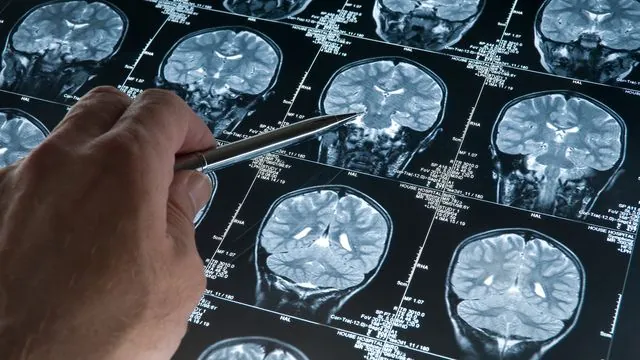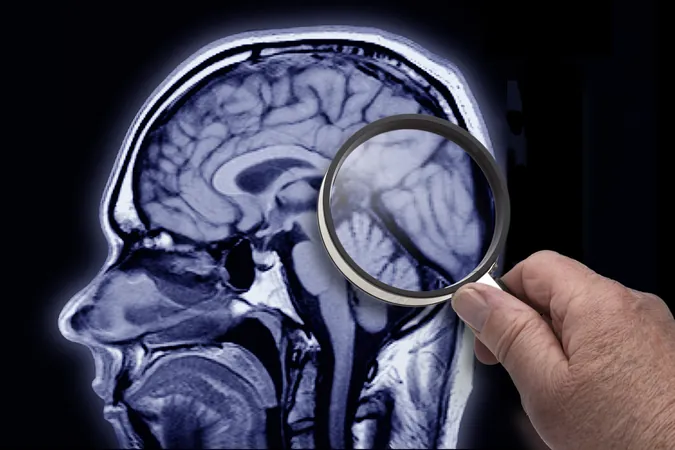
Breakthrough Discovery: RNA Molecules Could Transform Nerve Regeneration
2025-07-11
Author: Li
Unlocking the Secrets of Nerve Regeneration
In a groundbreaking study from the Weizmann Institute of Science, researchers have unearthed a family of mysterious RNA molecules that could revolutionize our understanding of nerve regeneration. Unlike the brain and spinal cord, peripheral nerves, which extend to the skin and organs, can heal after injury. This ability makes central nervous injuries notoriously difficult and often irreversible, while peripheral nerve damage can be repaired over time. Nevertheless, the underlying mechanisms of this regeneration have remained largely elusive.
Revealing an Unknown Mechanism
Led by Professor Michael Fainzilber, the research team published their findings in the journal Cell, revealing that a specific family of over 150,000 RNA sequences, known as B2-SINEs, play a crucial role in nerve recovery. These sequences had no known function until this study highlighted their significant increase in expression just one day post-injury.
The Surprising Role of B2-SINEs
Initially disregarded for their chaotic nature—jumping around the genome and often appearing inappropriately—B2-SINE RNA transcripts are now believed to be pivotal in preparing neurons for regeneration. Dr. Indrek Koppel and his colleagues identified 453 specific B2-SINE sequences that promote nerve growth, showcasing that this unique response occurs only in peripheral nerves and is absent in the central nervous system.
Connecting the Dots: Peripheral to Central
Excitingly, further experiments demonstrated that these peripheral B2-SINEs could also stimulate growth in central nervous system neurons. When introduced to retinal neurons in mice, the B2-SINEs enhanced the regeneration process after injury. A similar outcome was observed within the motor cortex, the brain region crucial for muscle control.
From Laboratory Findings to Clinical Applications
Despite these promising results, Fainzilber cautions that the acceleration of nerve growth observed is not yet a solution for conditions like paralysis. However, this research does pave the way for potential therapies that mimic B2-SINE activity and connect growth-inducing molecules closer to the nerve cell body, thus fostering quicker recovery.
A Broader Outlook: Potential Beyond Peripheral Injuries
What’s more, the implications of this study extend beyond peripheral nerve repair. The research team is exploring the role of the B2-SINE mechanism in recovering from strokes and even tackling progressive neurodegenerative diseases like ALS, which affect millions globally. This exciting avenue of research could hold the key to more effective treatments in the future.
The Future of Nerve Regeneration Research
With collaborations alongside institutions such as UCLA and Tel Aviv University, Fainzilber’s lab is dedicated to translating these findings into real-world solutions. As they delve deeper into the mechanics of nerve regeneration, there is hope that they may one day unlock effective therapies for a range of debilitating conditions, potentially changing the lives of countless individuals.


 Brasil (PT)
Brasil (PT)
 Canada (EN)
Canada (EN)
 Chile (ES)
Chile (ES)
 Česko (CS)
Česko (CS)
 대한민국 (KO)
대한민국 (KO)
 España (ES)
España (ES)
 France (FR)
France (FR)
 Hong Kong (EN)
Hong Kong (EN)
 Italia (IT)
Italia (IT)
 日本 (JA)
日本 (JA)
 Magyarország (HU)
Magyarország (HU)
 Norge (NO)
Norge (NO)
 Polska (PL)
Polska (PL)
 Schweiz (DE)
Schweiz (DE)
 Singapore (EN)
Singapore (EN)
 Sverige (SV)
Sverige (SV)
 Suomi (FI)
Suomi (FI)
 Türkiye (TR)
Türkiye (TR)
 الإمارات العربية المتحدة (AR)
الإمارات العربية المتحدة (AR)